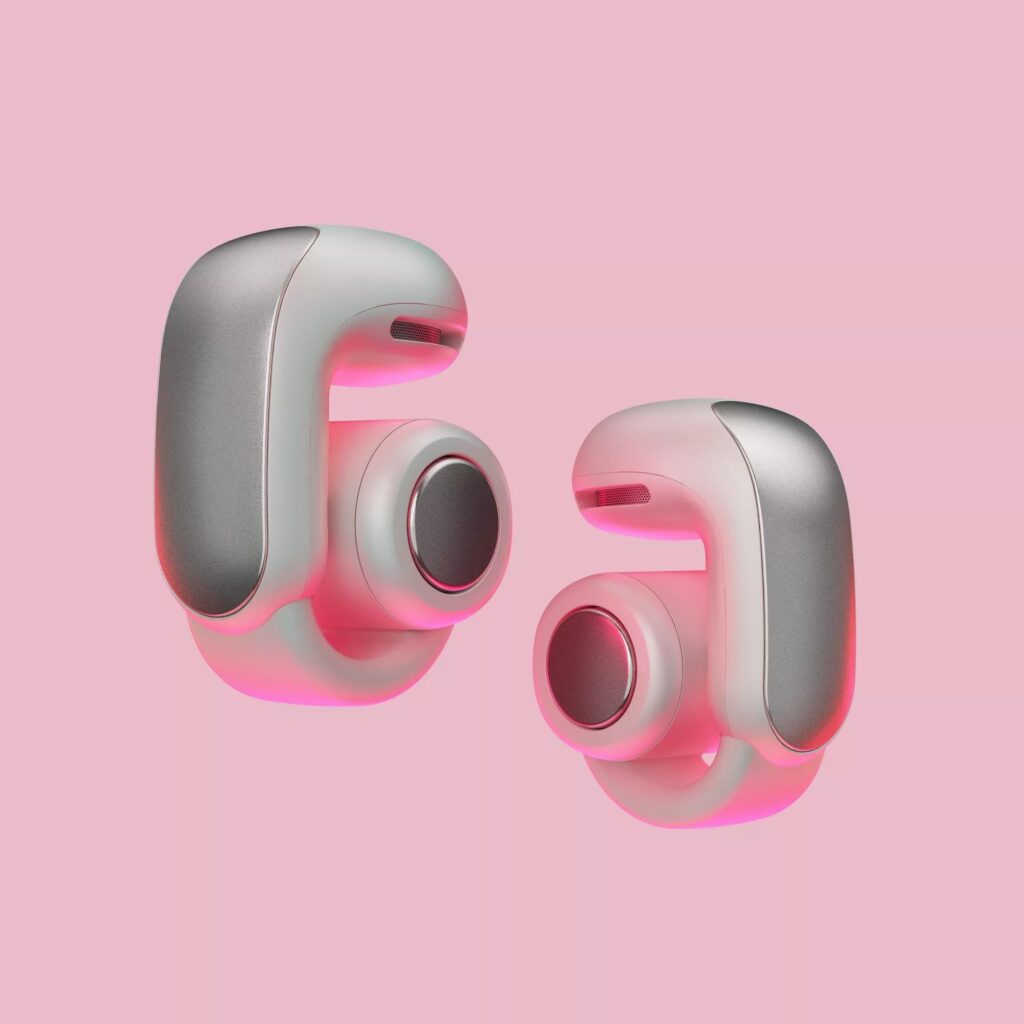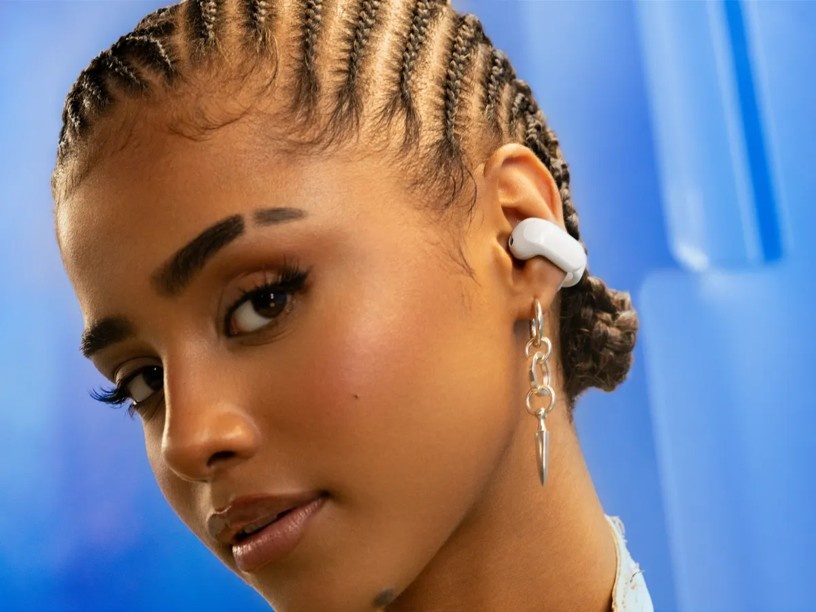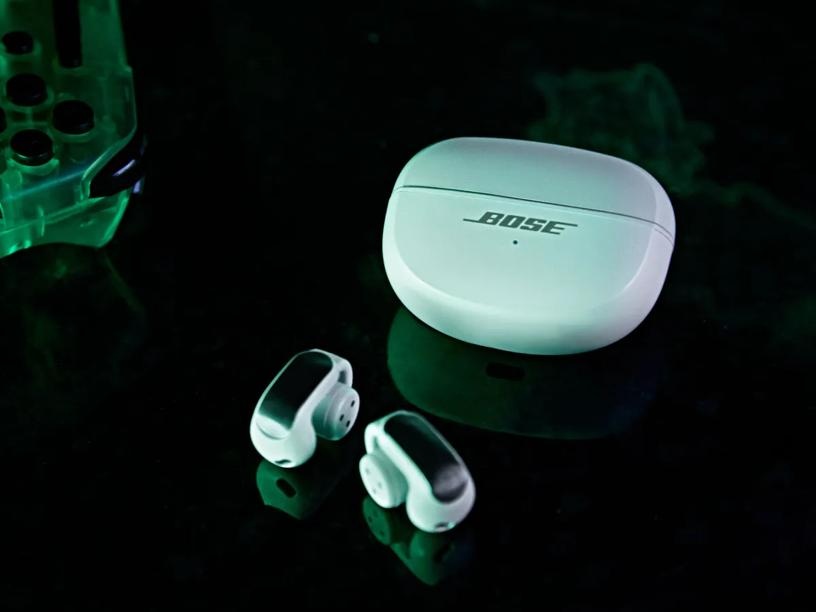Review: Bose Ultra Open Earbuds
They’re the best open earbuds on the market, with unmatched sound quality, and only one — inexplicable — problem.

Open earbuds have been a steadily growing category over the past few years. The appeal is simple; imagine getting the benefit of wireless audio, for listening to music, podcasts, and videos while on the go, but not having any of your surroundings blocked out, meaning you’re perfectly aware of what’s happening around you.
This can be a pleasant use for ambient use at home — unlike other earbuds, there’s no need to say “what?” and pause your music when someone says something to you — but it’s borderline essential in other settings. When cycling, for instance, you do not want to miss out on the sound of cars around you; and situated in the office, you need to hear when someone addresses you directly. Additionally, many people just don’t like the “boxed-in” feeling of earbuds that fully seal off their ears.
So, the market need is fairly obvious, and there’s a lot of competition in the space. But, unlike smartphones, Bluetooth headphones, smartwatches, and so many other categories of tech, there’s no established form factor for how to do open audio.
There are smart glasses, like the Meta Ray-Bans, which put speakers in the arms of glasses, pointed directly at your ears. My review for the latest generation, with the newest features will be out this week.
There are “hollow” earbuds, like the Sony LinkBud Opens, which have donut-shaped ear inserts, meaning they fit and work like normal earbuds, but have a hole in the center, letting in your surroundings. Then there are earbuds like the Nothing Ear (open), which hook around your ear and just float the driver above your ear.
And then there are bone conductive headphones. Rather than play music through the air, these wrap around your head, hook over your ears, and play music by sending vibrations into your skull. They’re not scary or dangerous — in fact, they put fewer strains on your ear drums — and they also are more weather resistant, with some versions possible to swim with. The downside is they’re quite ugly, have poor battery life, annoying controls, wrap around your head, and the sound quality is at best just fine, but often muffled.
In short, it’s a segment with a lot of experimentation, no real market leader, and no decided form-factor; and Bose, with their Ultra Open Earbuds, is betting on yet another style. Namely, they are basically the earbud versions of clip-on earrings; with a small cylinder resting to the back of your ear — containing the battery and control button — and then the actual earbud section resting on the inside of your ear, connected by a flexible silicon band.

Out of the box, it’s a little unintuitive, and at least on my ears, nipped a little when put in the wrong place. However, having used them for a few weeks, it’s now second nature to flip them on, and always land them on a comfortable spot — and they are comfortable. Not as much as ordinary earbuds, and a more traditional arc over the back of the ears would have less of a “bite,” but these are small, hold extremely securely in place, and I have forgotten I’m wearing them after wearing them for several hours at a time. At no point have I ever taken them off because they’re uncomfortable; and the lack of any “boxed-in” feeling is truly lovely.
The Bose are probably the most expensive open earbuds on the market, at $299, and the premium price comes with two main benefits: style and sound quality. The former is pretty subjective, but I do think they’re the best looking product in the category. The blue colors look like a sports products, but not in a bad way — the light “Moonstone Blue” color of my pair is lovely — and the more tame colors make them easily fade into an outfit. Beyond the look; the case is pretty small, they have IPX4 water resistance, and also have a really simple control scheme, with a clicking button on the top of the battery “barrels,” for play, pause, Google Assistant etcetera. The clicking buttons are so intuitive, and don’t affect the placement of the buds in your ears, unlike tapping on conventional earbuds.

Then there’s the sound quality and there are two ways to compare it.
Against other Bose earbuds — either the range-topping QuietComfort Ultra Earbuds or normal QuietComfort Earbuds — these are a step down. Without the seal, you simply cannot get that much bass into your music, and the difference is noticeable. The driver rests just outside your ear canal, firing audio precisely toward your career, and so you just can’t get that much bass.
However, these murder every other open earbud by comparison on for sound quality. They ought to — they’re twice the price of most of them — but they live up to that expectation, with a clear, dynamic sound, which is more than good enough for listening to music as you walk along.

Immersive Audio is the title of their spatial audio setting, and though it sounds good in demos, it more often misses than hits in real world applications, and does so at a massive cost to battery life. The one feature that is quite nice though is their optional Auto Volume feature, which will increase or decrease volume based on the loudness of the environment; and though I rarely trust settings like this, this works pretty well, and I have it on by default now.
Call quality is fine, all unremarkable, and it comes with multipoint connectivity — letting you pair to two devices at once — which is an essential for me at this point. The battery life in the earbuds and case are pretty long too, so you’ll never find them dying in your ears, or have you rushing for a charger.
Overall, they’re the best open earbuds I’ve ever tried, and my recommendation would be resounding but for one absence; wireless charging. As with their amazing QuietComfort Ultra noise cancelling earbuds — which are clearly the best earbuds on the market at this point — the case doesn’t have wireless charging, despite many cheaper earbuds having it as standard at this point, and you need to buy a separate $50 case sleeve from Bose to enable it.
This is inexplicable for a $300 pair of earbuds, and something Bose ought to resolve on an updated version; and please consider waiting until they release a new version with this. But those happy to plug them in, and looking for a great pair of open earbuds, these are the best I’ve ever tried.

